It’s long been said that behind every great man there is a woman. But how about a great man, or two, behind the telling of the story of two great women? In the case of MARY QUEEN OF SCOTS, not only do we have two strong female historical figures in Mary Stuart and Elizabeth I on screen and powerhouse actresses portraying them – Saoirse Ronan and Margot Robbie, respectively – but we have screenwriter BEAU WILLIMON and historian/author John Guy behind the story of these women.
BEAU WILLIMON crafts an intricately constructed script that delves into history while giving us a fresh perspective on the relationship between these two women thanks to the underlying research of historian and author John Guy. Adapting Guy’s work “Queen of Scots: The True Life of Mary Stuart”, bringing these legendary rulers to the screen was no easy task as Willimon had to bring history to life with his words and character constructions, interweaving two distinctly different royal courts, the political battles and subterfuge unfolding between England and Scotland, while showcasing the commonality and uniqueness of Mary and Elizabeth as not only queens in a world dominated by men but as familial relations.
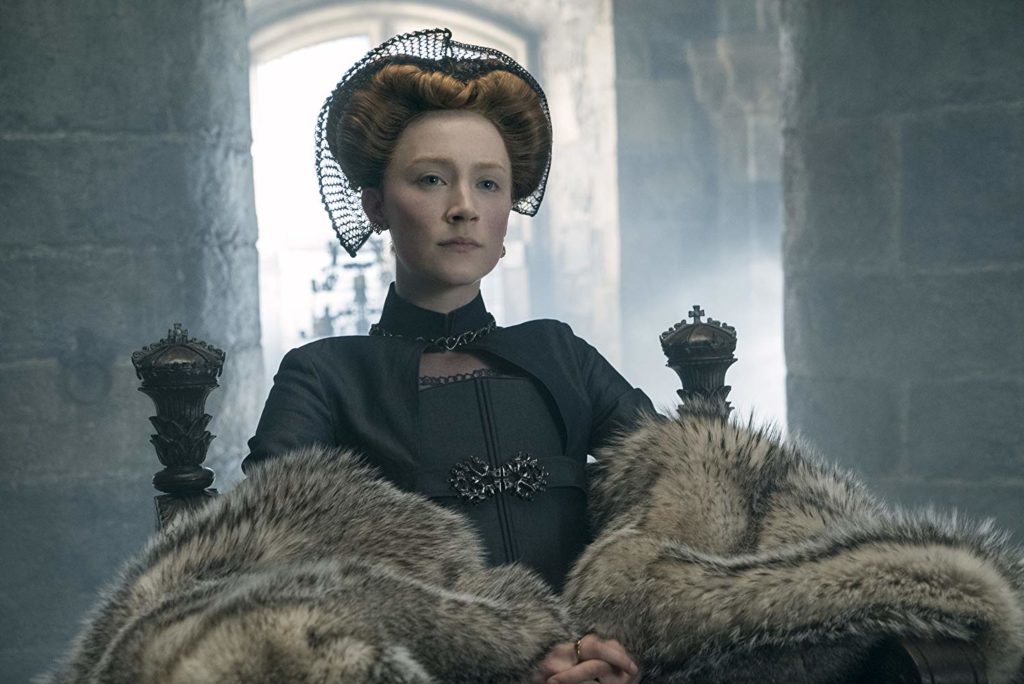
MARY QUEEN OF SCOTS is not only a look into the past, but lays the foundation for what is timely and topical in the 21st Century, particularly at this specific time of #MeToo and the discussions of gender parity. After all, as we have seen over the centuries, history does repeat itself. And as we have seen thanks to Willimon’s work as screenwriter for “House of Cards” and “The Ides of March”, he is more than adept when it comes to translating history, politics and human nature for the big and small screens, making it interesting, eye-opening and engaging. Together with director Josie Rourke, he does just that and more with MARY QUEEN OF SCOTS.
Beau and I sat down for this exclusive interview, talking about how he makes history accessible in the present tense, how he gets “into the shoes” of these historical figures and finds the humanness within each that makes them relatable and understandable through time, finding the emotional truth of the story and history while meeting and fulfilling dramatic expectations. . .

Beau, this script is so intricately constructed. I love what you do with the history and even the liberties that you take with it. Everything is beautifully interwoven. As I told Josie [Rourke], not only does Saoirse Ronan’s performance surpass that of Katharine Hepburn in John Ford’s 1936 film, but this film overall, surpasses John Ford’s work. Your script and what you bring to the table, number one, it couldn’t be more timely and topical. But, number two, the reality and truth that this script brings out as to two women in power is something that we haven’t seen before. And that’s what really sets this apart from everything else.
I’m so glad you say all that because that’s precisely what we set out to do. For me, it’s interesting because Josie and I were talking about the very things you’re bringing up, from the get-go. We knew that there was an opportunity here to say something substantive and poignant to audiences of 2018. At the same time, as the storyteller, you also have to sometimes shed that and say, “First and foremost, the best way to actually accomplish that is to try to get in the shoes of these two people.” To really just experience this story in the present tense through their eyes. They don’t have any historical dramatic irony. To them, it’s all in the present tense, and they’re figuring out as they go. Also, how do I access this? I’m not a renaissance queen. Well, maybe on Halloween. [laughing] But, you grasp for the things that have been eternal and universal. Things like love and lust, joy and despair, trust and betrayal. The things that we all understand and that allow us to access these two characters who on the one hand, were these larger than life monarchs, who had to in their bearing, be a nation. And at the same time, were also two very young women who had their own flaws and shortcomings, and strengths, and were trying to figure it out as they went along, in a very human sense.
Something that you truly did, and that Josie followed up on with the visuals, and John Mathieson’s incredible cinematography and staging, is the fact that, you truly defined both women, and you really show us two distinct personalities. You start with that thread of commonality. That they’re women and they’re rulers. But then the distinction that you create with the character design, with the lightness and freedom that Mary has. She’s open and she’s kind. And it’s that kindness, of course, that is her downfall. And then Elizabeth on the other hand, by films end, she’s as cold and hard as her white Kabuki make-up. Then that’s her downfall. We see this, but you delineate and you show that each a strength, as their downfall, but also what it is that gives them their power.

We really turn the historical stereotypes on their head, because they’re not true. At least at this time in their lives. Oftentimes Mary, in the historical record, has been portrayed, not just in films or plays, but also in history books as being this naïve, impulsive, over-emotional reckless, young woman. And Elizabeth we often think of as this stalwart, resolute, armored, detached figure, but honestly, and this is what John’s book does so well, in actually digging into the historical record and saying, “Well everything we’d thought we knew about these two women has really been written mostly by men who were trying to diminish them”, in the same way that their own courtiers were trying to diminish and undermine them at the time. Elizabeth at this time had only been on the throne for three years. She was in her mid to late-20’s. Most of her life she had been exiled, a bastard child who was more in fear for her life than ambitious for a crown. It must have been quite remarkable to her that she had even gotten to this place. She was incredibly indecisive, insecure, paranoid. She had not yet become the Elizabeth that we have immortalized.
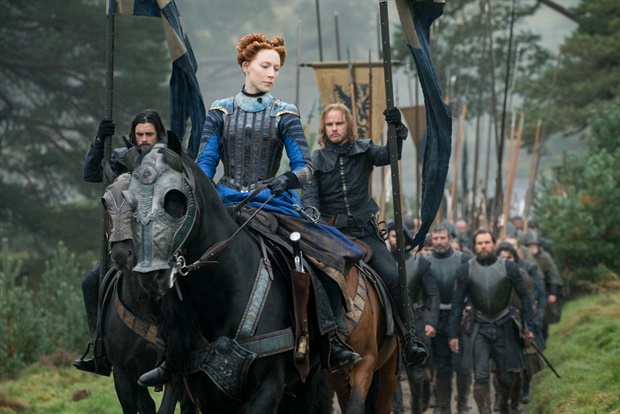
Mary, on the other hand, far being impulsive and reckless and naïve, had moved to France when she was a little girl, grown up in the French court, had been crowned a French queen, and understood far more acutely the complexities of the royal court than Elizabeth had ever had access to. So when she arrived in Scotland, a lot of the choices she was making were deliberate, politically savvy, and nuanced. That’s the argument that John makes in his book, which is a really fresh perspective, and I think more honest about who they were. So in many ways, the Elizabeth that we see by the end of the movie has been tested and burnished by a more adept monarch to the North. She learned a lot from Mary, and I don’t think you would have gotten the Elizabeth we’ve come to immortalize without Mary. Up until really the very end for Mary, or at least during those seven years before she advocated, it really did look like she was making all the right moves. In many previous iterations of the telling of Mary’s story, her falling in love with Darnley and marrying him has often been seen as allowing her heart of her lust to overtake her good sense. But, actually, Darnley was a really smart choice.
Politically, yes.
Exactly. He was a dissolute, pretty bad guy. But he was a Stuart, he was a Catholic, and smartly, Mary had actually fulfilled Elizabeth’s request of marrying an English nobleman. So she’s like, “You asked for that, and I’m giving it to you.” And, he served his purpose of siring an heir. If you were a Stuart married to another Stuart, and you produced an heir, your claim to the British throne is so much stronger than it was before. And this is what Elizabeth’s court was so afraid of. It really looked like for most of their interaction between Mary and Elizabeth, that Mary had the upper hand.
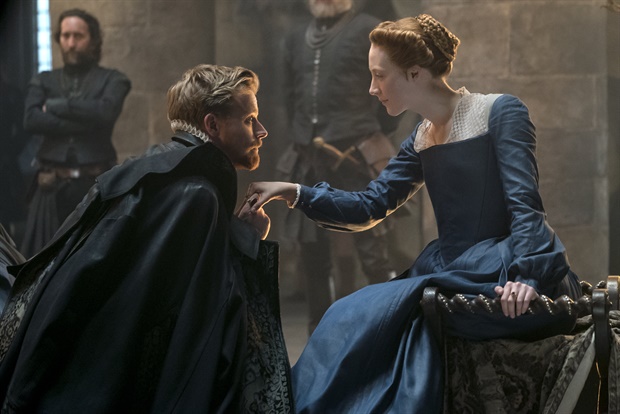
I’m curious, Beau, about when you got approached to write this script. You’re looking at John’s book as a great piece of reference material for starters and then there is the letter that was discovered in 2010. I remember when that letter was discovered. I’m such an anthropological geek with things like this that pop up.
Yeah. You’re a total Elizabethan nerd, aren’t you?
Any era! It’s like when Richard’s skeleton was found in the parking lot of a mall. It changed part of history. When this letter was found, it spun everything around in terms of the relationship between Mary and Elizabeth and what Elizabeth really thought of Mary. That letter is so telling. So to see that incorporated, not only into John’s book, but into this script, and of course then the hypothetical “what if” third act of the meeting of the two, just brilliantly done.
Well, it’s been said both seriously and [as] a lot of people have said in recent years, “What if women ran the world?” Why do we wanna see a different Congress? And we’re about to see a much different Congress than we’ve seen before. You have to be careful because you don’t wanna overgeneralize, or reduce and say, “Well, if women ran the world, it would mean X, Y or Z because this is the way women are.” But, it’s a provocative thought because you’ve looked at millennia of history where men have mostly run the world, and what have you seen? Conflict and bloodshed. So what’s the alternative to that? It’s understanding, compassion, and trying to work things out. I think that if you look at Mary and Elizabeth’s relationship, their actual instinct, their impulse was to find a way to co-exist amicably. While they did threaten each other to a degree, they also reinforced each other because if there’s another queen that can rule, it means that your monarchy isn’t necessarily a fluke. Like this is possible. This is okay. I’m not the only one. And there is a paradox there. But, I think that they were trying at every turn, despite the counsel of their advisors, to find a way to make it work. And the political forces and challenges that they were facing individually were just too strong to allow for that. And so the real tragedy here is two people that were attempting to connect and failed to do so. And that’s one of those things that that letter reveals – is that this continued attempt up until the very end.
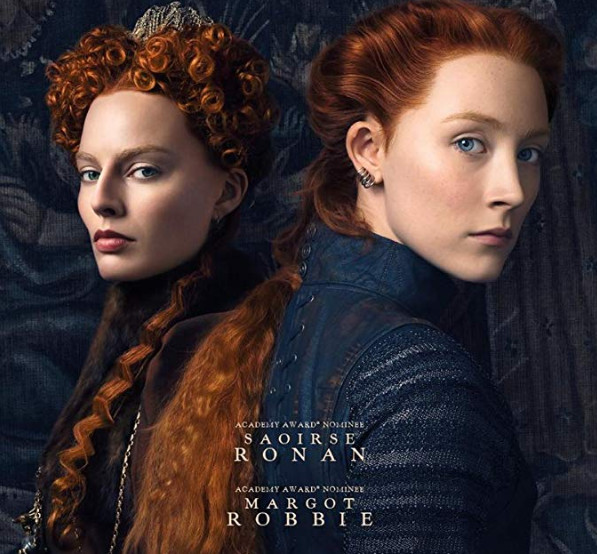
Of course, the way the third act is executed with the “what if” meeting between the two is so eloquently done. And I love how you follow through with Mary’s personality. She goes from tears and practically begging Elizabeth, and when Elizabeth says, “No”, then that defiance that we have seen consistently in her rises up.
This is why I had to rewrite the scene so many times. It’s because of exactly what you’re talking about. To back up for a second with that scene, I mean, the history police, of course, will say, and have said, that this never happened, and they’re right. We knew that. This was not an oversight on our part.
This is a “what if” based on what we know.
Exactly. And look, it’s highly unlikely. I don’t think anyone can say with 100% certainty that they never met in person, although they probably didn’t. The challenge here is that when you’re telling a story that’s about a relationship in many ways between these two people that haven’t met, there’s a lot you can do, and I think Josie pulled it off beautifully in terms of not just how do you dramatize the letters between them, but also how do you see them going through similar things at the same time so that it feels almost like a dialogue visually, even when they’re not speaking to each other. And yet, there’s a dramatic imperative to see these two people that you’ve been following throughout the whole movie meet face-to-face. The way I wanted to approach that was in thinking about truth, not just as historical, factual truth, but also what is emotional truth? What is the essential truth? How can we dramatize how they actually felt about each other and about their own positions in a way that we could do in no other way besides having them meet in person. So that was the impulse there. We’re not the first to do this. [Friedrich] Schiller’s great play about Mary Queen of Scots, which takes place in the last few days of Mary’s life, also envisions them meeting. He also knew that they didn’t meet, but there’s a dramatic expectation for the audience that you wanna fulfill. And Shakespeare, not to compare ourselves to the great Bard, but to emulate his great work, in a lot of his historical plays he takes great liberties, far greater liberties than we did. And yet, they feel true, because he’s getting in the skin of these characters, and those scenes allow us to understand them better.
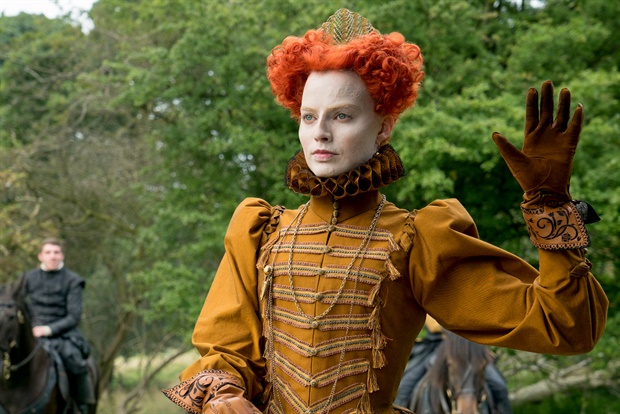
What really unlocked it for me was making the realization that we needed to maintain that defiance. In my first draft of it, it was more focused on Mary in a place of abdication. She’s gone to England for protection. She’s not trying to raise an army, and she says early on in the scene, “I will get on my knees if I have to” which is an extraordinary thing for an anointed queen to say. Like, “I will beg.” And she is desperate. She walks into that scene I think saying to herself, “I will swallow my pride. I will approach this with humility. I will do whatever I need to do.” And yet she’s been conditioned her entire life, it’s in her DNA, to be regal, to have a supreme sense of confidence. Everything she’s had to do to survive in Scotland up until this point has been about showing, and exerting, and expressing strength, and she can’t just make that go away. So she’s torn at that moment between showing humility and showing confidence. You see that tug-of-war happening. Ultimately Elizabeth, who’s standing on the other side, who holds all the cards, actually I think in that moment, wants to show her own vulnerability, because who else could understand. She actually wants to help. She wants to do what she can. She wants to take the mask off, to take the wig off, and just be. Yet, Mary’s tug-of-war forces her to put that armor back on. That’s the tragedy of that scene, and of this entire relationship. Once I sort of realized that we needed to see Mary fail to hold on to humility at that moment, because she’s been conditioned through survival to exhibit strength, then the scene really came alive for me.
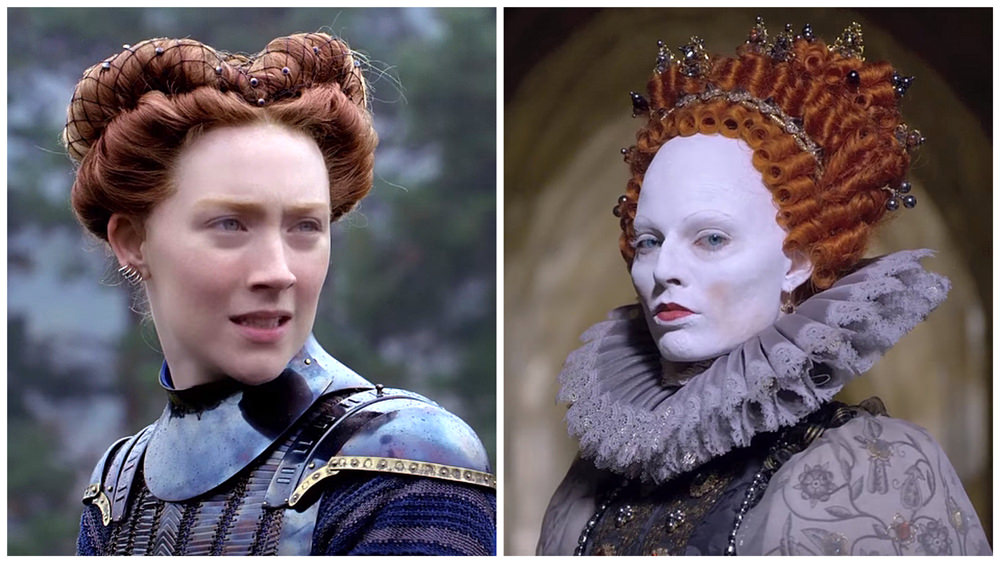
How do you sit down, and approach something like MARY QUEEN OF SCOTS, because this is, for all intents and purposes, this is a character study. Two character studies that meld into one. But I’m curious, how do you sit down, especially from a historical standpoint, and approach writing a screenplay like this?
Initially it’s overwhelmingly daunting because you know that you could spend 10 years doing nothing but reading books about these two women and still feel like you don’t know everything. You do as much research as you can, and luckily John Guy’s book it’s so exhaustive but at the same time is able to put most everything you need to know in one tome. Of course, I was looking at other things as well, but really I knew I had that, and I also knew that I could call up John at any time, to make sure that I didn’t completely embarrass myself. But, you try to absorb as much as you can about the subject and all the things that are unfamiliar to you and make them as familiar as you can. Then you have to put the book aside, and you have to just ask yourself, “If I’m an audience member, if I’m someone who doesn’t know anything about this story, what am I gonna gravitate the most to?” And you start making choices as to what events and what aspects of those events you wanna dramatize. Then you just try to get in those scenes, in these people’s shoes, and just live that scene as they would’ve lived it. I guess at a certain point you know you’ll be able to go back, you’ll be able to reorganize if necessary, refine, cut, have the historian look at your work, and make sure that everything’s accurate, but you kinda need to let everything go, and just walk in the shoes of another human and believe that you’re capable of doing that; that you’re capable of closing that 450-year gap, and be able to sit side-by-side with them as a fly on the wall, and just live that moment.

Most surprising thing you learned about Mary?
I think one of the funnest things I learned about her was that she and her four ladies in waiting, who are all named Mary, by the way – “the four Marys” – all the Marys would dress up in drag as men, and head out into Edinburgh, and go to the city in disguise without any security or anything, just to sort of live it up. Remember they’re teenagers when she comes back [to Scotland from France]. She just wanted to go out among the people and experience that and Ritzia would go along with them. It reminds you, “Oh my gosh, she was 18 when she came back!” I actually wrote that sequence in the first draft. It was 180 pages, I needed to make some cuts, so we didn’t get a chance to film it. But I love that, I love that adventurous spirit that she had. I don’t think Elizabeth ever would have done that.
by debbie elias, exclusive interview 11/17/2018












